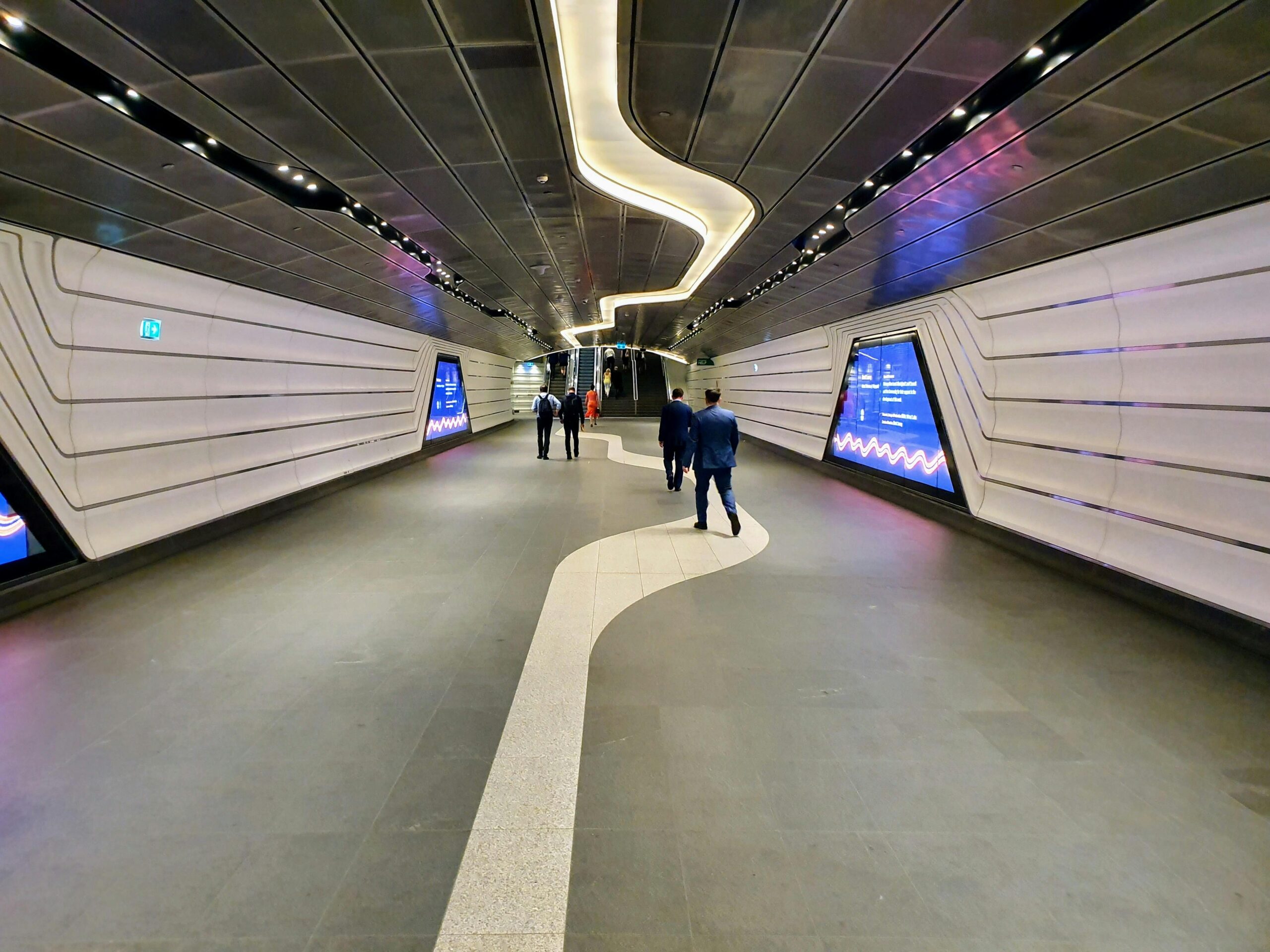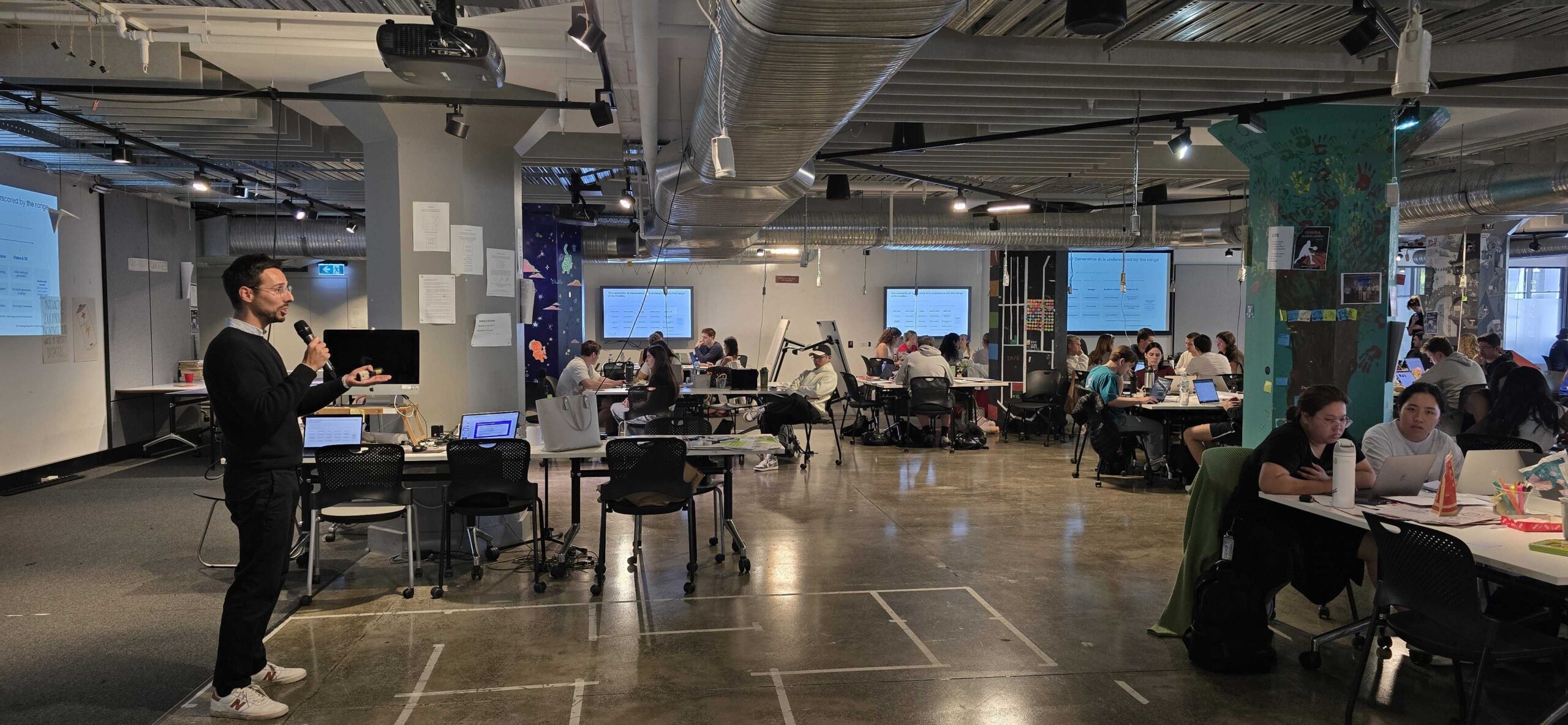As the ABC works to create efficiencies following heavy budget cuts, it has enlisted an expert in service design to assist with the revamp. Marketing’s Michelle Herbison chats to Alvaro Marquez about his service design ideologies, previous career adventures and his plans for the national broadcaster. Fresh in the country after a three-year stint in China, Marquez has been given the task of pulling apart and examining a whole organisation’s systems in order to aid the transition of the ABC to a more audience-centric service provider.
Marketing: In your new role at the ABC, you’re focused on service design. I’d like to start off by chatting about the discipline itself. What is service design?
Alvaro Marquez: Service design is not a new thing in the world of design. It’s basically looking at how certain products or services are delivered to the customer. It’s all about taking a user-centric or customer-centric lens through which you can look at what kind of products and services an organisation delivers, and then how that should function to provide these services or products. Having a good service ensures that the processes are streamlined, but that doesn’t mean necessarily that the experience is memorable or good or preferable.
So if you think of airlines, for example, the fact that you can get in an aeroplane in Milan, put your bags on a belt, and that these bags magically appear on the other side of the world in Shanghai, requires a lot of service; a lot of processes must be designed. However, you can have a fantastically efficient process, but still have a very shitty experience from a customer point of view, because the airline messes up your reservation, because you get a crappy seat, because the staff are overworked and under-paid… Ultimately, the goal is to not just deliver a service, but to focus on the experience.
M: So it’s a matter of applying design thinking to non-visual problems?
AM: Yes, absolutely. I think a general misconception with design is that it is often understood as a way of going about solving an aesthetic problem. While there is some truth to that, design at large is about problem solving. Designers are largely responsible for the commercial and public success of big organisations. It’s all about having a close connection with the directors, and having a strong point of view and a strong vision where you can articulate what the company’s all about. It’s much more of a thought process to define a truly meaningful product for the users, rather than an afterthought of how to prettify something, because then it’s superficial and cosmetic – ‘putting lipstick on the pig’, if you will.
M: What’s the difference between service design and marketing? Textbook marketing principles are all about putting the customer at the centre, which is very similar to what you’re talking about.
AM: I guess the difference with marketing is it traditionally adopts a role of communicating what’s out there and what’s in it for you. So, at most, what marketing does through research is tell you the ‘what’; ‘you should do this because people want A, B, C’.
What marketing doesn’t do is come up with those products and services, and tell you why, and understand what is the context and why is it relevant for people and what is the best way to deliver that. So if market research tells you the ‘what’, service design tells you the ‘why’ and the ‘how’ basically.
M: So service design is involved earlier in the process?
AM: Actually, service design is a process that starts much earlier and it continues afterwards. I’m over-simplifying, but just to make it a bit more evident, it’s very difficult to market anything when you don’t have a product yet, and that product would not be there had service design not ideated and created that product first.
M: I think it works differently in different organisations. A lot of theory says that marketing should be involved in the product creation process as well, but perhaps in many organisations that is not the case.
AM: There are different schools of thought, of course.
M: You spent time in China before coming to Australia for this job. What can you tell us about the differences over there in terms of how service design works?
AM: Good question, and I could go on forever. So I’ll just make it short. China’s very scary. By that I mean, the speed at which things happen is really mind-blowing. When I was working together with Frog, we had clients who would implement our designs on a weekly basis and put them out in the open and available to the customers right away. That was something that made us really uncomfortable, because we were not comfortable with the maturity of some decisions and the implications that they would have. But I think that was totally fine for them.
In Asia, specifically in China, there is a much higher tolerance for having a product that is as is – like a working prototype if you will – rather than waiting for a fully developed program or project. There’s a higher tolerance to having something that is half-baked in a way. And there is also an expectation that whatever you have should be updated fairly quickly, especially in the mobile communication industry. It’s really apparent with players like Xiaomi and Tencent and Alibaba; they’re pushing new products and new features on a weekly basis. That’s something that Apple, as big and proud as it is, so far has never done.
The shortest life cycle of any product development anywhere in the world besides China tends to be between nine and 18 months, and in China it’s going through the full cycle every three or six months. They’re getting pretty good at getting the standards right and they’re doing it really, really fast. And their market is just huge. From a design standpoint, it is much more complex than anywhere else that I have seen – and I have delivered projects in every continent except Africa (and Antarctica, of course). From a business perspective, it’s really amazing what the new generation is doing from a design, engineering and tech standpoint. They’re very hardworking people and very smart.
Also, from a personal point of view, I would recommend anyone to go and spend a year living in China, because that gives you a good perspective on what the majority of the world looks like. Sometimes in the West we forget that we are a tiny pocket among a really, really huge population of people who are living in a developing market, who don’t have a lot of things we take for granted, like clean water from the tap and clean food and clean air. However, these people who don’t have clean water still have access to the same kinds of networks that we do or sometimes even higher [speed]. It changes the paradigm very significantly and puts a lot of things in perspective.
M: In regards to the way it’s designing new products, do you see China as being ahead and leading the world, or do you see it as a completely different scenario?
AM: It is a completely different scenario, and it has to do with the realities of the market. The customer base and the amount of languages and scripture types that you have, and cultural behaviour, are defining how some of these products are shaped. So I don’t think it’s a matter of being ahead or behind, or being better or worse; it’s basically solving a whole different set of problems than here in Australia.
M: Let’s talk about the ABC. Can you tell me about ABC Innovation? What’s going on there at the moment, and why did they have you join?
AM: I think Mark [Scott, managing director of the ABC] has made it really clear that there needs to be an effort into reaching a wider audience, while having not as much support from the government in terms of finances as before. I think, from within the organisation as far as I have seen, it is a really honest effort at optimising as much as possible and reinvesting some of that money to generate wider reach. What I will do is bring together in a more cohesive way the different creative practices within the organisation – design and user experience, and start to apply some of these user- centred design principles to the baseline, so we can get much better at what we do, which is delivering relevant content to the audience. There is a lot of housekeeping that needs to be done, of course. When you open a new role within an organisation, you just need to get certain structures up and running, so that’s what I’m going to be doing at the beginning. Once that’s in place, I have the feeling that we’ll be able to see bigger traction and much more momentum.
Everyone that I’ve spoken to is super-engaged and passionate. It’s funny because they sort of feel a bigger responsibility to the ABC than just the job itself. Everyone sees that the ABC is a very precious and important thing in Australia, and everyone has the best intentions and wants to make the best decisions. When you’re working in a sector for profit, the motivation is different. I’m super-stoked to be a part of it.
M: Do you see the ABC as being a design-led organisation currently?
AM: That’s a good question, and I wish I had an answer, because I only know the ABC from the outside, not as an employee. I just joined. Some of the things that I’ve been seeing are really fantastically designed, both from an executional point of view and from a relevancy perspective.
But I don’t think that everything is executed across the same level across the organisation, just because it’s such a big place. Without someone in a role such as the one that I will be performing, it’s very difficult to have one person who has an eye on everything that’s going on from a design standpoint.
M: What are your goals and vision for where you want to take it?
AM: Part of my role will be inward-facing in a way – bringing in some of these methodologies and the toolkit of human- centred design within the organisation, so we can do old things in a new way.
The way the ABC used to work is obviously something that needs to be reviewed, in the way that it adopts the practices and the benefits of service design earlier on. So, on the one hand, there is how we work together and what we do. On the other hand, there is how it looks from the outside, from the audience’s perspective.
That is much more about how products work together, working very closely with each of the individual producers, in each individual division, and making sure that the ABC, from an image standpoint, looks and behaves in a consistent way and speaks in the same tone. So I’m a little bit between driving change internally, from a process and methodologies perspective, and an outward-facing, leading the design front, and bringing coherence and creating this unified design language.
M: Interesting. I’m sure it will be a good challenge for you.
AM: I’m really super, super excited. I think the organisation is really mature to adopt some of these larger, really brave design-thinking practices. It’s really exciting to see how passionate everyone is. So I’m pretty sure we’re going to create fantastic things together and we’re going to drive the benchmark even higher. I cannot wait to continue.












